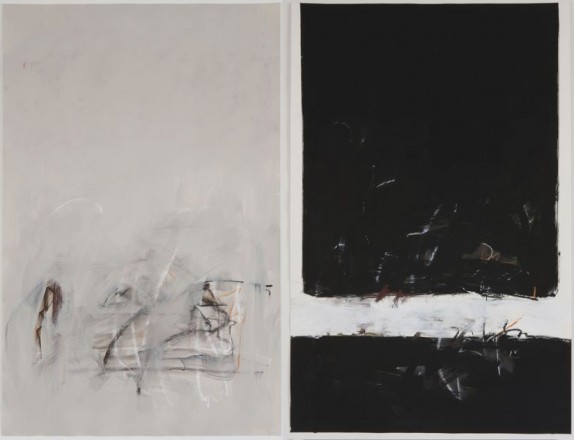A small,The 11th Patient (2018) Full Movie Online cool star in distant space plays host to something amazing.
Scientists have discovered that at least seven Earth-sized worlds circle the star TRAPPIST-1, a ultracool dwarf star only about 40 light-years (235 trillion miles) from Earth.
The planetary haul -- which includes at least six rocky planets total, three of which were first discovered last year -- is detailed in a new study published in the journal Natureon Wednesday.
SEE ALSO: Stop describing a planet as 'Earth-like' unless it really isThis marks the first time so many Earth-sized worlds have been found orbiting the same star.
It's possible that some of those exoplanets (worlds orbiting stars outside of our solar system) could play host to liquid water on their surfaces, boosting the chance that alien life might be lurking there.
"We can expect that within a few years we will know a lot more about these planets," Amaury Triaud, a co-author of the new study said during a press conference, adding that if there is life on one of these worlds, we could find it within a decade.
Before you go running off to plan your trip to TRAPPIST-1, it's important to remember that the system isn't exactly an analogue to our own.
The best way to think about TRAPPIST-1 and its worlds is to compare it to Jupiter and its many moons.
Just like Jupiter's moons, the planets orbiting TRAPPIST-1 all interact with one another, meaning that their orbits are influenced by one another.
The seven planets in the system closely orbit their star, so that if TRAPPIST-1 were in place of our sun in the solar system, the planets surrounding it would all be within the orbit of Mercury, according to the study's authors. The planets are thought to be tidally locked to their star, meaning that, like the moon, the same sides of the exoplanets' faces always point toward the host star.
If you were to stand on the surface of one of the planets, the salmon-colored star would look about 200 times dimmer than our own sun, giving off about the same amount of light as our star does at the tail end of a sunset, Triaud said.
 Original image has been replaced. Credit: Mashable
Original image has been replaced. Credit: Mashable "The spectacle would be beautiful because every now and then, you would see another planet -- maybe about as big as twice the moon -- in the sky depending on which planet you're on and which planet you look at," Triaud said.
Because the star system is so close (in cosmic terms) to Earth, it's ideal for any scientist hoping to check out these worlds for themselves, and they already have.
The same team behind this Naturestudy announced the discovery of three planets orbiting TRAPPIST-1 in May 2016.
Since then, the researchers did many followup observations on the system to try to better characterize the planets orbiting the faint star light-years from home.
The new study details the four other planets orbiting the star using multiple ground-based telescopes and NASA's Spitzer Space Telescope.
Scientists used the transit method to find the exoplanets, meaning that they had to wait for the worlds to pass in front of their star, causing a dip in the light of the dwarf star. Because the orbits of each planet influence the others, such observations also allowed the researchers to ascertain the masses and diameters of the planets, Triaud said.
 Original image has been replaced. Credit: Mashable
Original image has been replaced. Credit: Mashable The fact that they transit their star also means that scientists will be able to do plenty of followup observations that will characterize the atmospheres of the worlds thanks to the light shining on them from the star.
"This is just the neatest system," NASA exoplanet scientist Steve Howell, who is not affiliated with the new study, said in an interview.
"While there was much hoopla about the Proxima Centauri planet -- well, okay, that's cool too, don't get me wrong -- that planet doesn't transit, and so there just won't be a lot of followup work you can do on that planet."
It's still unclear whether or not life exists on any of these worlds.
All of the planets are far enough from their star that they could conceivably host liquid water on their surfaces, according to the researchers. Four of the worlds in particular are thought to be in the "habitable zone" of the star, which means they could be our best chances for life outside the solar system.
However, none of this is a sure thing. Figuring out the habitable zone of a dwarf star isn't exactly easy.
Because TRAPPIST-1 and stars of its ilk are much smaller and dimmer than our sun, it's unclear exactly where the habitable zone lies.
We have a relatively good understanding of the habitable zone around sunlike stars, but ultracool dwarfs are trickier, in part because they are very active in their early days, possibly stripping worlds that would be in the habitable zones of their atmospheres.
That said, these stars do live a long time, possibly allowing advanced life time to evolve on worlds surrounding stars like TRAPPIST-1, which is thought to be at least 500 million years old.
The Hubble Space Telescope characterized the atmospheres of TRAPPIST-1B and TRAPPIST-1C, finding that the two worlds probably aren't encircled by hydrogen and helium rich atmospheres, meaning their atmospheres could resemble our own.
Researchers will be able to get an even better look at these worlds in the future.
NASA's James Webb Space Telescope (JWST) -- Hubble's telescope successor expected to launch in 2018 -- should be able to peer deeply into the atmospheres of alien planets to try to see if they really could be like our own.
"This is just the neatest system"
By learning more about the atmospheres enveloping on these worlds, it's possible that we'll be able to figure out if we are alone in the universe.
The JWST might be able to pick out oxygen, carbon dioxide, methane and other molecules in exoplanet atmospheres to find any biosignatures that might be present.
While there isn't a silver bullet molecule that indicates whether life is definitely present on an alien world, certain elements could give scientists pause if found in a planet's atmosphere.
If, for example, JWST found "molecular oxygen, or if it found carbon compounds that on the Earth we assign to pollution -- like burning of fossil fuels -- that would be pretty cool," Howell said. "Those would be things that you'd have to scratch your head and say, 'wow, that would be a pretty good sign.'"
 Abstracts by Scott Treleaven
Abstracts by Scott Treleaven
 Peloton recalls its Tread and Tread+ due to growing safety concerns
Peloton recalls its Tread and Tread+ due to growing safety concerns
 Roy Moore's attempt to discredit journalists backfires
Roy Moore's attempt to discredit journalists backfires
 Facebook's 'keep us free' plea shows the cost of social media. Again.
Facebook's 'keep us free' plea shows the cost of social media. Again.
 Horsemaning, Mars, and a Tiny Book by Sadie Stein
Horsemaning, Mars, and a Tiny Book by Sadie Stein
 Basecamp fire grows as employees tweet they're leaving the company
Basecamp fire grows as employees tweet they're leaving the company
 Small businesses had a brutal pandemic. Amazon's income tripled.
Small businesses had a brutal pandemic. Amazon's income tripled.
 Kevin Spacey mural in Manchester to be removed after allegations of sexual harassment
Kevin Spacey mural in Manchester to be removed after allegations of sexual harassment
 A Badjohn in Harlem: An Afternoon with Earl Lovelace by Anderson Tepper
A Badjohn in Harlem: An Afternoon with Earl Lovelace by Anderson Tepper
 12 best tweets of the week, including abolish lasagna, blue Shrek, and a toot canal
12 best tweets of the week, including abolish lasagna, blue Shrek, and a toot canal
 Poetic Doubt; Battling Anxiety by Lorin Stein
Poetic Doubt; Battling Anxiety by Lorin Stein
 7 best places to find audiobooks to fill your ears with good reads
7 best places to find audiobooks to fill your ears with good reads
 Marvel's 'The Falcon and the Winter Soldier' composer interview
Marvel's 'The Falcon and the Winter Soldier' composer interview
 Pentagon accidentally retweets call for Trump's resignation
Pentagon accidentally retweets call for Trump's resignation
 The Tyranny of Footnotes by Paul Wachter
The Tyranny of Footnotes by Paul Wachter
 Weight loss apps don't help users with one really important thing
Weight loss apps don't help users with one really important thing
 You'll be able to turn off your sound or video in Instagram Live Rooms
You'll be able to turn off your sound or video in Instagram Live Rooms
 Burton's U.S. Winter Olympic uniforms are very old
Burton's U.S. Winter Olympic uniforms are very old
 Our Café au Lait Cup—Now for Sale! by Sadie Stein
Our Café au Lait Cup—Now for Sale! by Sadie Stein
 Tom Brady is being compared to Judge Doom at the 2021 Kentucky Derby
Tom Brady is being compared to Judge Doom at the 2021 Kentucky Derby
Swimming with Oliver SacksHaving Trouble Sleeping? Read the Ultimate Insomnia Cure.California Street: Learning to Surf in the SixtiesAtticus Finch and Naming Your ChildrenThe Last Bastion of Print: The TheatreFrom the Archive: Donald Justice’s “Last Days of Prospero”Aubrey Beardsley’s Haunting Edgar Allan Poe IllustrationsOn “Hangry”The Teddy Bears’ PicnicA Love Letter from Guillaume Apollinaire, in the TrenchesThe Teddy Bears’ PicnicPoem: George Bradley’s “August in the Apple Orchard”Cynthia Macdonald, 1928–2015 by Dan PiepenbringThe Misanthrophy of R. S. ThomasThe Horror of Philosophy, the Philosophy of HorrorOn the Pleasures of Not ReadingIs It Possible to Be a Conscientious Travel Writer?A Letter from H. L. MenckenA Letter from H. L. MenckenA Newspaper’s Front Cole Sprouse had a really difficult time working with Jennifer Aniston on 'Friends' Reminder: Lena Dunham doesn’t give ‘the tiniest of shits’ what you think about her body This Twitter game imagines a world where movie actors are replaced by Muppets St. Patrick's Day Google Doodle is the luckiest thing you'll see all day Trump kicked One Direction out of his hotel because he's not a nice man Paul Ryan is getting dragged by Ireland for his dismal pint of Guinness In honor of St. Patrick's Day, here is the Irish prime minister trolling Trump Adorable social media robot dog looks like Zuckerberg's pup, natch End of an era: 2020 brings Tesla's federal tax credit to zero 'Rise of Skywalker' is Star Wars' past. 'The Mandalorian' is its future. Rapper tears into NME on Twitter after they put him on cover without permission 'Gavin and Stacey' Christmas special: Love and laughter are in the air 'The Rise of Skywalker' failed to care about Finn's story. That's a problem. Climate change has greatly impacted the world in 2019 How to celebrate Hanukkah in VR 'You' Season 2 finale: What the hell just happened? The legend behind that powerful lightsaber in 'The Mandalorian' finale Does YouTube radicalize users? This study says not —but it's deeply flawed. TV crew capture wild footage of an erupting volcano while running for cover Hire care enjoys the wet sand between its tires after being swept up by tide
2.3669s , 10138.09375 kb
Copyright © 2025 Powered by 【The 11th Patient (2018) Full Movie Online】,Pursuit Information Network